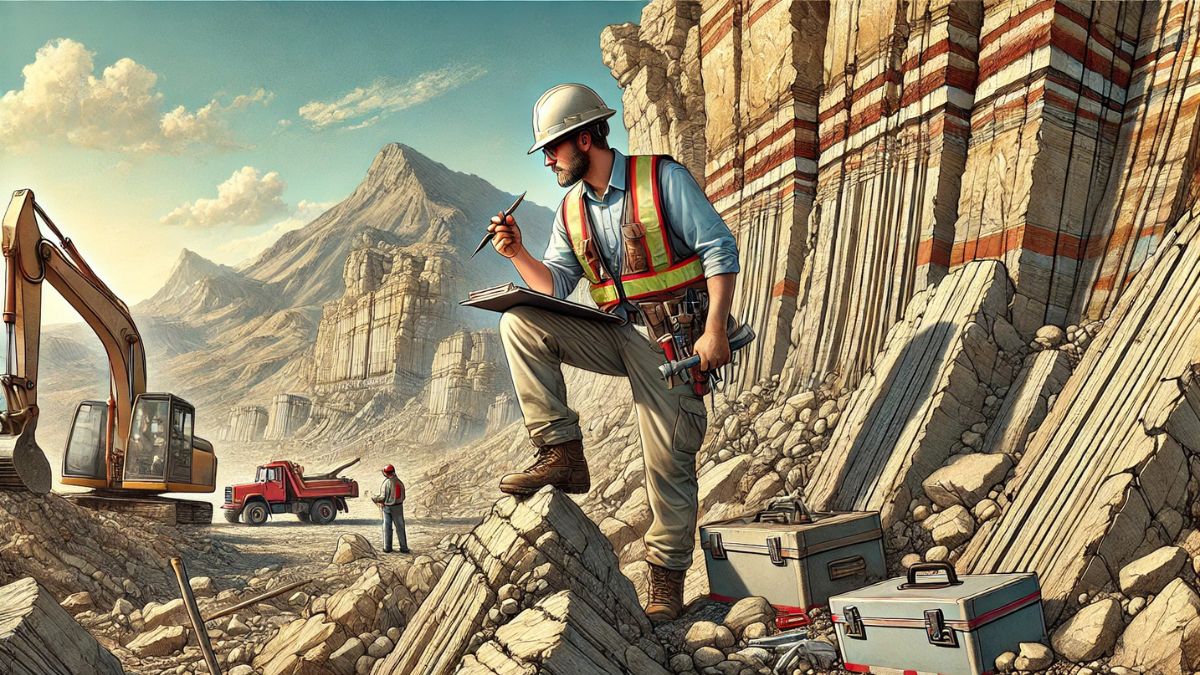Home / What is Rock?
WHAT IS A ROCK? Rocks are the essential components of our planet. They are classified into three major groups, determined by how the rocks were formed: igneous, metamorphic, and sedimentary. Rocks are aggregates of many different mineral grains, which are fused, cemented, or otherwise held together.

The rock cycle helps us understand the origin of the three basic rock groups. Arrows represent processes that link each group to the others.
The Basic Rock Cycle
Magma is molten rock that forms deep beneath Earth’s surface. Over time, magma cools and solidifies. This process, called crystallization, may occur either beneath the surface or, following a volcanic eruption, at the surface. In either situation, the resulting rocks are called igneous rocks.
If igneous rocks are exposed at the surface, they undergo weathering, in which the day-in and dayout influences of the atmosphere, hydrosphere, and biosphere slowly disintegrate and decompose rocks.
The materials that result are often moved downslope by gravity before being picked up and transported by any of a number of erosional agents, such as running water, glaciers, wind, or waves. Eventually these particles and dissolved substances, called sediment, are deposited. Although most sediment ultimately comes to rest in the ocean, other sites of deposition include river floodplains, desert basins, swamps, and sand dunes.
Next, the sediments undergo lithification, a term meaning “conversion into rock.” Sediment is usually lithified into sedimentary rock when compacted by the weight of overlying layers or when cemented as percolating groundwater fills the pores with mineral matter.
If the resulting sedimentary rock is buried deep within Earth and involved in the dynamics of mountain building or intruded by a mass of magma, it is subjected to great pressures and/or intense heat. The sedimentary rock reacts to the changing environment and turns into the third rock type, metamorphic rock. When metamorphic rock is subjected to additional pressure changes or to still higher temperatures, it melts, creating magma, which eventually crystallizes into igneous rock, starting the cycle all over again.
Where does the energy that drives Earth’s rock cycle come from? Processes driven by heat from Earth’s interior are responsible for creating igneous and metamorphic rocks. Weathering and erosion, external processes powered by energy from the Sun, produce the sediment from which sedimentary rocks form.
TYPES OF ROCKS
IGNEOUS ROCKS
IGNEOUS ROCKS form by the crystallization of once-molten material. This molten rock is called magma when underground and lava once on the surface. It is essentially a silicate melt and may contain, as well as silicon and oxygen, other elements—particularly aluminum, iron, calcium, sodium, potassium, and magnesium. These combine, as the magma or lava crystallizes, to form silicate minerals, which make up igneous rocks.
- Pink granite
- Andesite
- Basalt
- Xenolith
- Diorite
- Syenite
- Gabbro
- Dolerite
- Dunite
- Obsidian
- Pumice
- Kimberlite
- Bojite
- Rhyolite
- Snowflake obsidian
- Vesicular basalt
- Breadcrust volcanic bomb
- Lamprophyre
- Anorthosite
- Leucogabbro
- Troctolite
- Larvikite
- Norite
- Trachyte
- Porphyritic Trachyte
- Lithic Tuff
- Crystal Tuff
- Tourmaline Pegmatite
- Amygdaloidal Andesite
- Spilite rock
- Ignimbrite rock
- Pitchstone rock
SEDIMENTARY ROCKS
SEDIMENTARY ROCKS are deposited at the Earth’s surface, many on the sea bed, and are often layered. The rocks have layers that are often visible to the naked eye. Detrital sediments result from weathering, erosion, and accumulation of particles from rocks already formed. Organic sediments are composed of fossils and material derived from onceliving organisms. Chemical sediments are formed from chemical precipitation of material such as rock salt and calcite.
List of sedimentary rocks, by clicking on a specific rock, you can see basic information about it:
METAMORPHIC ROCKS
METAMORPHIC ROCKS form from the alteration of a preexisting rocks. Contact metamorphism is caused by direct heat, and the resulting rock is usually crystalline. Regional metamorphism is due to heat and pressure and produces foliation, or cleavage, in rocks where the minerals have been aligned by pressure and recrystallization. Dynamic metamorphism is associated with the alteration of rocks along major thrust zones (fault planes).
List of metamorphic rocks:






















